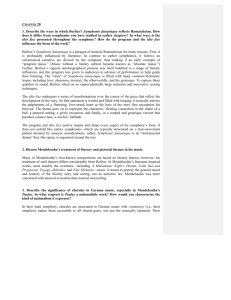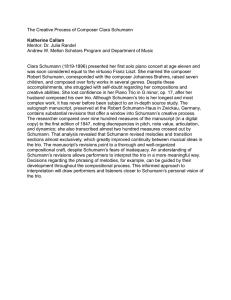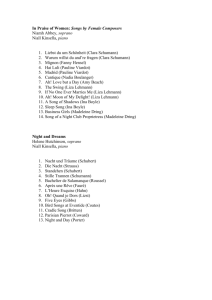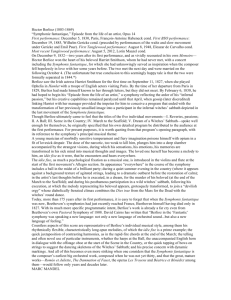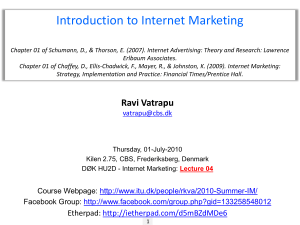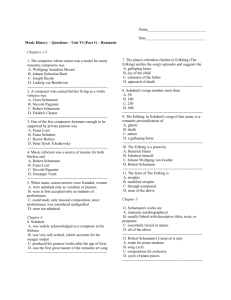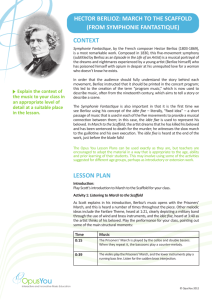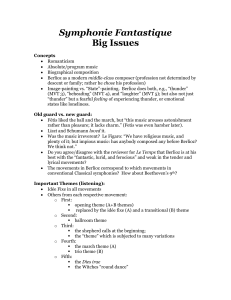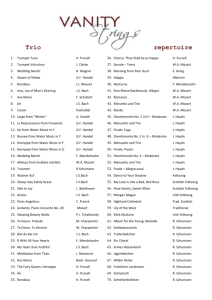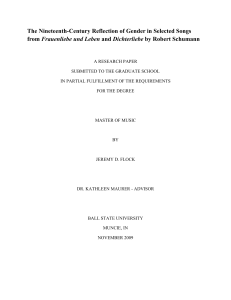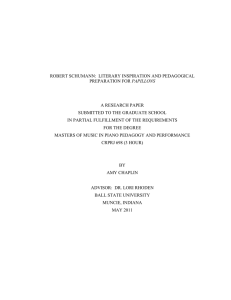Discuss the use of the programme in the Symphonie, making
advertisement
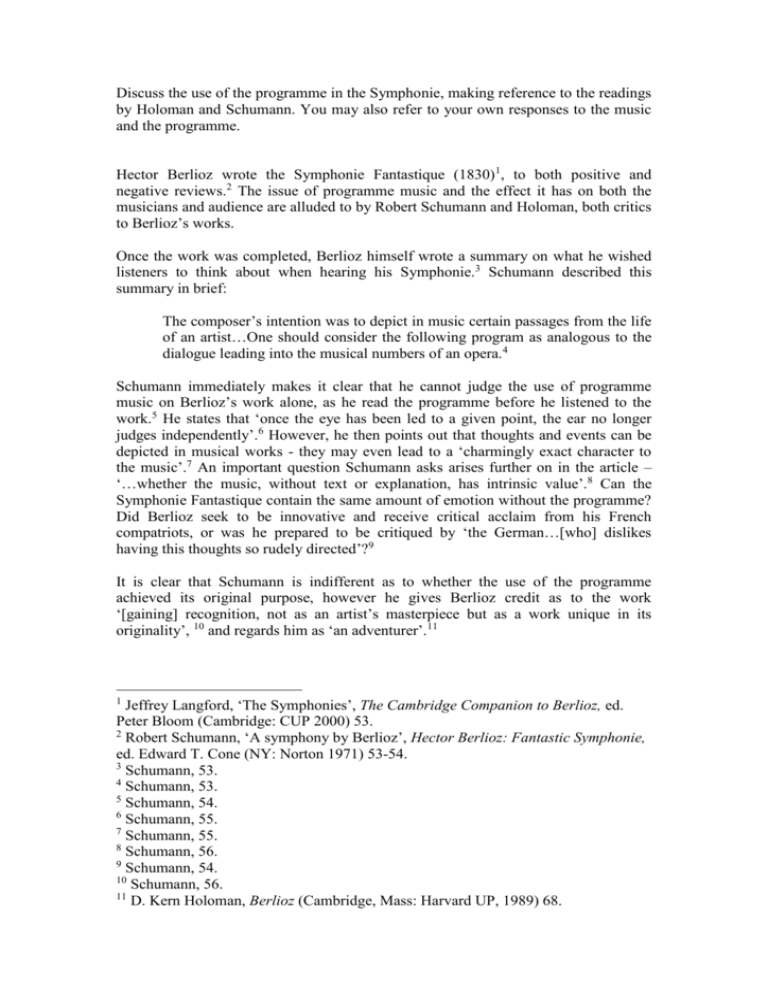
Discuss the use of the programme in the Symphonie, making reference to the readings by Holoman and Schumann. You may also refer to your own responses to the music and the programme. Hector Berlioz wrote the Symphonie Fantastique (1830)1, to both positive and negative reviews.2 The issue of programme music and the effect it has on both the musicians and audience are alluded to by Robert Schumann and Holoman, both critics to Berlioz’s works. Once the work was completed, Berlioz himself wrote a summary on what he wished listeners to think about when hearing his Symphonie.3 Schumann described this summary in brief: The composer’s intention was to depict in music certain passages from the life of an artist…One should consider the following program as analogous to the dialogue leading into the musical numbers of an opera.4 Schumann immediately makes it clear that he cannot judge the use of programme music on Berlioz’s work alone, as he read the programme before he listened to the work.5 He states that ‘once the eye has been led to a given point, the ear no longer judges independently’.6 However, he then points out that thoughts and events can be depicted in musical works - they may even lead to a ‘charmingly exact character to the music’.7 An important question Schumann asks arises further on in the article – ‘…whether the music, without text or explanation, has intrinsic value’.8 Can the Symphonie Fantastique contain the same amount of emotion without the programme? Did Berlioz seek to be innovative and receive critical acclaim from his French compatriots, or was he prepared to be critiqued by ‘the German…[who] dislikes having this thoughts so rudely directed’?9 It is clear that Schumann is indifferent as to whether the use of the programme achieved its original purpose, however he gives Berlioz credit as to the work ‘[gaining] recognition, not as an artist’s masterpiece but as a work unique in its originality’, 10 and regards him as ‘an adventurer’.11 Jeffrey Langford, ‘The Symphonies’, The Cambridge Companion to Berlioz, ed. Peter Bloom (Cambridge: CUP 2000) 53. 2 Robert Schumann, ‘A symphony by Berlioz’, Hector Berlioz: Fantastic Symphonie, ed. Edward T. Cone (NY: Norton 1971) 53-54. 3 Schumann, 53. 4 Schumann, 53. 5 Schumann, 54. 6 Schumann, 55. 7 Schumann, 55. 8 Schumann, 56. 9 Schumann, 54. 10 Schumann, 56. 11 D. Kern Holoman, Berlioz (Cambridge, Mass: Harvard UP, 1989) 68. 1 Similarly, Hoffman also draws on the idea of thoughts and events depicted in the programme. His opening statement explains why Schumann composed such a work: …with a clear intent of unifying the elements of his musical understanding…to give full vent to his urges for freedom, naturalism, and intensity.12 Instead of critiquing the programme’s value to the music and how it was received by the public, Holoman seems to draws on the music’s technical attributes to examine the programme in depth. The use of the idée fixe as the recurring melodic motive, especially in the ‘Witches Sabbath’ (fifth movement),13 the changes in chord progression to express the ‘dramatic context’,14 and the introduction of instruments from the ‘opera house and military band’ add to a particular expressive effect.15 12 Holoman, 99. Holoman, 102. 14 Holomam, 103. 15 Holoman, 102. 13
